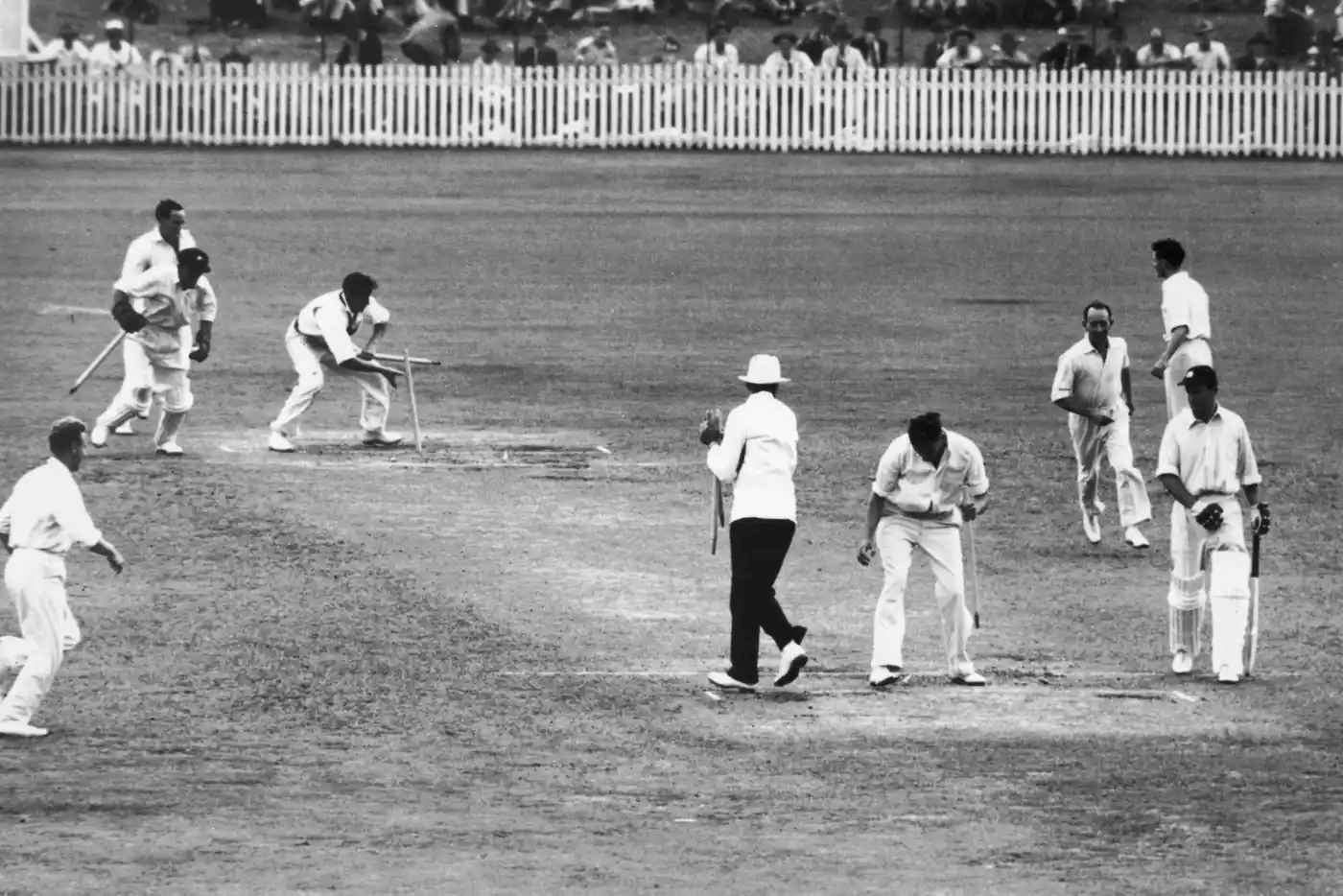The Follow-On Rules in Test Cricket: History, Strategy, and Iconic Moments
Updated on : 16 December, 2024

Image Source: Adobe Stock
The follow-on rule is a unique aspect of Test cricket that allows the team batting first to require the opposing team to bat again immediately after their first innings if they have a substantial lead. This rule is designed to reduce the likelihood of a drawn match by compelling the trailing team to bat again sooner, thus increasing the chances of a decisive outcome.
About Follow-On
When a team bats first and establishes a significant lead, they can enforce the follow-on, which means that after the second team completes its first innings, they must bat again without any break. This can put additional pressure on the batting side, as they have already struggled against the bowling attack.
Who Decides the Follow-On?
The decision to enforce the follow-on lies with the captain of the team that batted first.
Factors influencing this decision include:
-
The Lead: The captain must consider how many runs they are ahead.
-
Pitch Conditions: The state of the pitch can affect how easy or difficult it will be for bowlers to take wickets.
-
Weather Conditions: Rain or other weather factors may influence whether it is advantageous to enforce the follow-on.
-
Bowler Fatigue: If bowlers have already bowled a lot of overs, their effectiveness may be reduced.
-
Time Remaining in the Match: The amount of time left in the match can also play a crucial role in deciding whether to enforce the follow-on.
History

Image Source: ESPN cricinfo
The follow-on rule has been part of cricket for many years, evolving with changes in playing conditions and strategies. Historically, it has been a point of contention among captains and teams, as its enforcement can dramatically shift the dynamics of a match.
In earlier days of cricket, enforcing a follow-on was more common due to fewer protective measures for players and less understanding of pitch conditions. However, as cricket has evolved, captains have become more strategic about when to enforce this rule, often weighing potential risks against rewards.
What is the Minimum Lead Required to Enforce Follow-On?
According to Law 14 of the Marylebone Cricket Club (MCC) Laws of Cricket, the minimum lead required for enforcing a follow-on varies based on the length of the match:
-
Five-Day Matches: A lead of at least 200 runs is required.
-
Three or Four-Day Matches: A lead of at least 150 runs is required.
-
Two-Day Matches: A lead of at least 100 runs is required.
-
One-Day Matches: A lead of at least 75 runs is required.
These conditions ensure that teams cannot arbitrarily enforce a follow-on without having established a significant advantage over their opponents.
Why Do Teams Enforce the Follow-On?
Teams may choose to enforce the follow-on for several reasons:
-
Increase Pressure on Opponents: By forcing the opposing team to bat again immediately, it puts psychological pressure on them since they have already failed once.
-
Reduce Chances of Draws: Enforcing a follow-on can help ensure that there is a result in the match rather than allowing for a draw, which can happen if teams bat cautiously in their second innings.
-
Momentum for Bowlers: Bowlers often perform better when they have just dismissed batsmen in their first innings and can carry that momentum into a second innings.
-
Time Management: If time is running out in a match, enforcing a follow-on allows more time for completing all innings and potentially achieving victory.
Why Do Some Teams Not Enforce the Follow-On?
Despite its advantages, there are several reasons why teams might choose not to enforce a follow-on:
-
Bowler Fatigue: Bowlers may be tired after bowling an entire innings, and asking them to bowl again immediately could diminish their effectiveness.
-
Pitch Deterioration: As matches progress, pitches can deteriorate and become more challenging for batting teams. Batting last can be particularly difficult if cracks develop or if conditions favor bowlers.
-
Strategic Decisions: Captains may opt to give their batsmen time to set up an imposing total rather than risk losing momentum by enforcing a follow-on.
-
Historical Precedents: There have been instances where teams have lost matches after enforcing a follow-on, leading captains to reconsider this strategy based on past experiences.
Examples

Image Source: NDTV Sports
One notable example of enforcing a follow-on occurred during the 2001 Test match between India and Australia at Eden Gardens in Kolkata. Australia batted first and scored 400 runs while India managed only 171 runs in response. With a lead of 229 runs, Australia enforced the follow-on.
However, India made an incredible comeback in their second innings, scoring 657 runs and winning by 171 runs—a historic victory that remains one of cricket's most remarkable comebacks.
Victories by Sides Not Made to Follow On

Image Source: myKhel
There have been several instances where teams not asked to follow on went on to win matches:
-
West Indies vs. England (1984): In this Test match at Lord's, England scored 500 runs while West Indies managed only 200 in their first innings but chose not to enforce the follow-on. West Indies then scored 600 runs in their second innings and won by 10 wickets.
-
India vs. Australia (2020): During this Test series in Australia, India batted first and scored 300 runs while Australia scored 200 in response. India chose not to enforce a follow-on and went on to win by chasing down Australia's total successfully.
These examples illustrate how teams can capitalize on opportunities even when not asked to follow on.
Victories by Sides Following-On

Image Source: The Cricket Monthly
Conversely, there are also famous instances where teams that were forced to follow on emerged victorious:
-
India vs. Australia (2001): As mentioned earlier, India's remarkable comeback after being asked to follow on remains one of cricket's greatest achievements.
-
England vs. Australia (1894): In this historic Ashes Test at Sydney Cricket Ground, Australia enforced the follow-on after England scored 300 runs and Australia managed only 100 in their first innings. However, England faltered in their second innings as well, allowing Australia to win despite being asked to follow on.
These instances highlight how cricket can be unpredictable; even when forced into difficult situations like following on, teams can still find ways to triumph against all odds.
Conclusion
The follow-on rule adds an intriguing layer of strategy and excitement to Test cricket matches. It allows teams with significant leads to put pressure on their opponents while also presenting risks associated with bowler fatigue and pitch conditions.
Understanding when and why teams choose to enforce or decline a follow-on can enhance appreciation for tactical decisions made during matches. With historical examples showcasing both successes and failures related to this rule, it remains one of cricket's most fascinating aspects—illustrating how quickly fortunes can change within this beautiful game we love so much!







